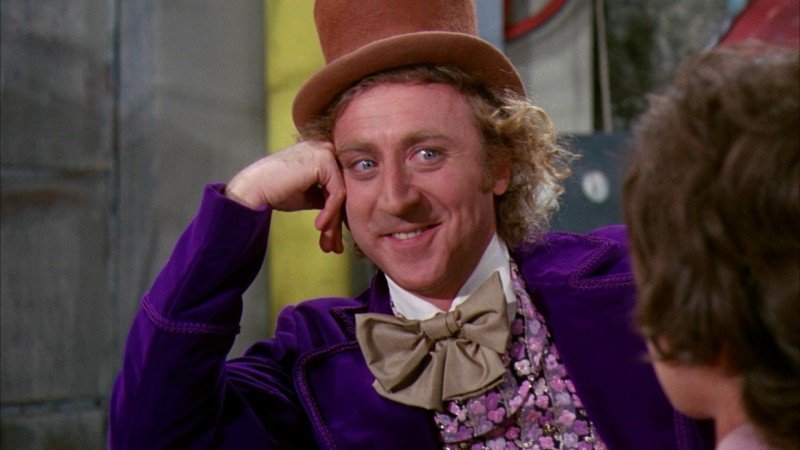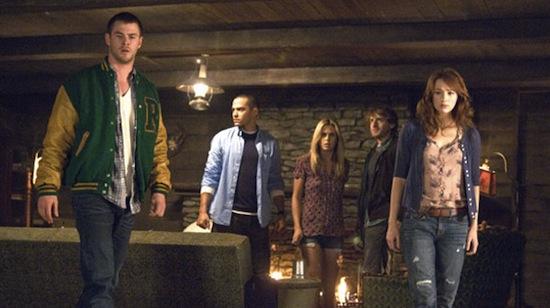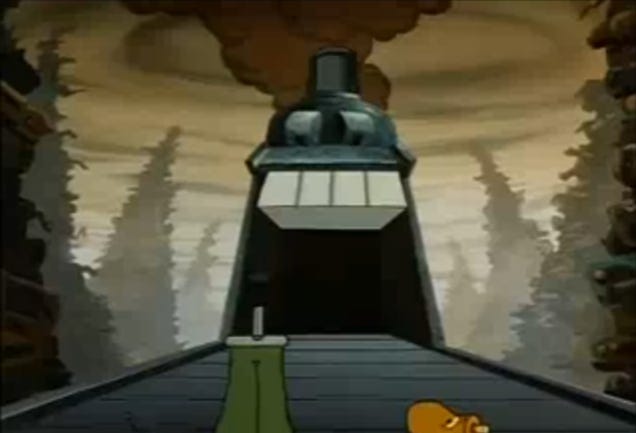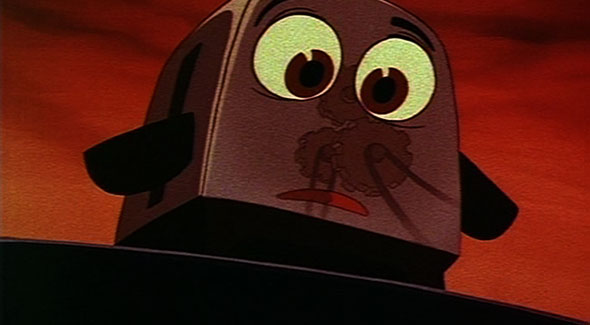Because Hellboy is a Halloween movie the same way that Die Hard is the greatest Christmas movie ever, where, while some might say that it's not a traditional holiday movie, it's set on the holiday and the holiday serves as the backdrop for the narrative of the film. And the message of the film is completely tied to the message of the holiday too.
In Die Hard, John McClane wants peace on Earth and machine gun goodwill to all German thieves pretending to be terrorists- traditional wholesome Christmas values. Similarly, Hellboy is all about monsters, costumes, supernatural stuff and Lovecraftian horrors. They even get John Hurt to say, "There are things that go bump in the night... And we are the ones who bump back." What could be more Halloween?
I mean, aside from the candy. That sweet, delicious, sugary candy. Oh, wait what is Hellboy's favourite snack?
 |
| Hint: It's Hawkman's favourite too. |
A number of scenes feature people in costumes on the streets, doing Halloween things like being costumes, trick-or-treating, and drinking beer in public spaces. The prominence of costumed people out and about allows Agent Bland McIdentifyingCharacter to explain away the sight of Sammael and Hellboy running through a crowded fair by saying, "Crazy costumes, huh?". This despite the fact that one of them looks like a devil that just spawned from the depths of hell. And that's our hero.
And on a side note, that's one of the great things about Hellboy, the fact that he is a demon. That he does look like the embodiment of evil. He's a red devil with a forked tail, which within the pop cultural lexicon generally means he would be the bad guy. But he's not. He's the good guy. And the movies constantly play with this, hinting time and time again that Hellboy is destined to bring the world to ruin by bringing upon the Apocalypse. That in constantly trying to save the world, Hellboy is battling against his own destiny.
Hell (ha! see what I did there?), they use the dissociation between the way Hellboy looks and his actions in the promotion for the movies. Aware that most people wold see a big red demon and go, "devil looking guy=bad", they had to make a point of saying that Hellboy was actually, you know, the hero of the movie.
 |
| I don't believe it. |
But back to the completely solid and hellfire-tight argument I was making, Hellboy and Hellboy II: The Industriable MacGuffin are great Halloween movies. Because although they may not be a 'pure' horror movies, the tropes of horror movies and literature, especially horror monsters, are fused into every fibre of their being.
Like, there are creepy things doing creepy things. For example, following the opening credits in the first movie, a blood sacrifice is used to resurrect the actual bad guy (i.e. not Hellboy), Rasputin. As in, that guy who couldn't be killed after he was shot, hang, stabbed, castrated, and drowned. A necromancer who mixes science with black magic in order to do evil things like summon elder gods beyond our comprehension into our realm of reality.
Did I mention that he was working with Nazis at the beginning of the film? Because he totally is. And that opening scene looks like a rain-drenched fanfic crossover between Frankenstein's laboratory- all bulbs, levers, and electricity everywhere- and a black magic/satanic ritual. Which is a tricky look to pull off, but they wear it well.
 |
| The glowing blue inter-dimensional portal is a striking touch that is very in this year. |
However, part of what makes the Hellboy movies great Halloween movies is that they about monsters. Now that sounds like a silly point, but think about traditional Halloween costumes. They are nearly always monsters. Vampires, werewolves, zombies, etc. Throw in some witches and that poor kid who just doesn't understand why dressing in a Nazi outfit isn't really okay and offensive. But why this is important is because the Hellboy movies understand the allure of a well-designed monster and provide their spin on classic horror monsters.
And when I say 'they put their spin', I mean Guillermo del Toro puts his spin on classic horror monsters. That's the director of The Devil's Backbone, Blade II (aka. the best Blade movie) and Pan's Labyrinth. If the names of those movies mean anything to you, you know that this guy knows his horror. And he also did a little movie called Pacific Rim, one of the most fun kaiju monster movies ever, just if he needed even more monster credentials.
Like the comic it is based on, the first Hellboy movie is a love letter to Lovecraftian horror. A Lovecraftian letter. Most of the monsters are all tentacles and anatomy that doesn't makes sense, existing outside human comprehension.
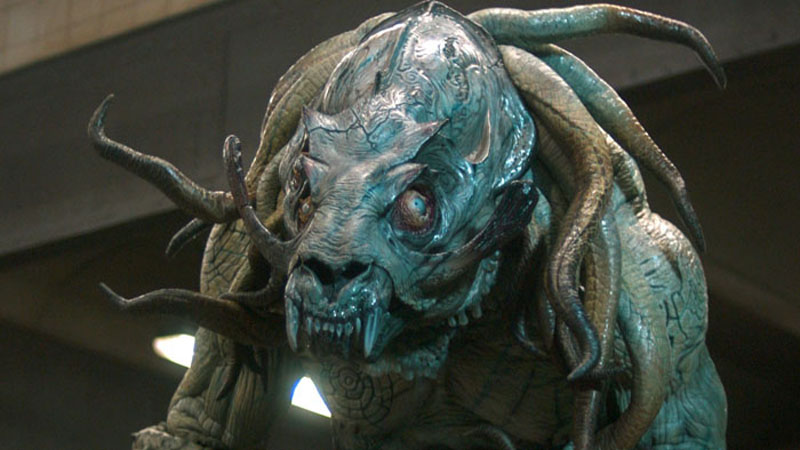 |
| His name might be Sammael but all I can think is "How the hell?" |
There are references to Elder Gods and creatures from another dimension too terrible to behold. There are unanswered questions, Hellboy often doesn't understand the series of events he finds himself in, refusing to acknowledge, or even learn, about his supposed destiny. There is also slime.
Lovecraftian horror tends to focus on slime over blood and the final tentacle boss battle has that in spades. Just like an alien shot by Will Smith, the hentai girl nightmare that Hellboy fights at the end of the movie explodes with slime being splattered everywhere rather blood or a healthy helping of guts. How much is a healthy helping of guts, I hear you ask? Well, you really should consult with your doctor for your dietary requirements, but I would say all them. All the guts.
But aside from displaying a crafty love for Lovecraftian horror, the first movie also features evil Nazis! Nazis often make the best villains since they're one of the few villains based on real world people that pose little to no ideological or cultural issues when cast as the bad guys. Nazis are universally deemed evil due to a thing that happened which everyone knows about and if you don't, my heart is sad. Sad for you. Please read a book and follow this up, your ignorance is showing and it's impolite to flash that in public.
However, this talk about Nazis leads to Karl Ruprecht Kroenen, aka that badass Nazi assassin with the blades.
 |
| "Why, yes, I am completely badass. And an assassin. A Nazi assassin." |
Because Karl Ruprecht Kroenen (International Badass Law dictates that he must be referred to his full name at all times) can be seen as a reverse Frankenstein's monster. Where Frakenstein's monster was constructed of deceased body parts stitched and sown together as a means to reanimate flesh and create life, Karl Ruprecht Kroenen has surgically stitched his body to prolong his life and avoid death.
Here is Professor Broom's report on Karl Ruprecht Kroenen:
"Subject, Karl Ruprecht Kroenen. Born in Munich, 1897. Suffered from a masochistic compulsion commonly known as "surgical addiction". Both eyelids surgically removed, along with his upper and lower lip, making speech impossible. The blood in his veins dried up decades ago. Only dust remains.
Four broken vertebrae. A steel rod inserted into his pelvis kept him upright... what horrible will could keep such a creature as this alive?"
What horrible will? A badass one, that's what horrible will.
Since only a badass such as Karl Rupretch Kroenen could make it okay for that poor kid who just doesn't understand why dressing in a Nazi outfit is offensive I mentioned earlier to make his costume not offensive. Just add goggles, a gimp mask, and some knifes to his forearms, all of a sudden, his costume is a sweet Karl Rupretch Kroenen cosplay.
 |
| Nailed it. No more offense shall be given on this day through my ignorance. |
Now between the two Hellboy movies, del Toro made Pan's Labyrinth, which is a superb fantasy horror movie that deserves its own review since it's just that amazing. But the point is, the growth that del Toro made as a filmmaker between the two Hellboy movies is palpable and the influence of Pan's Labyrinth is keenly felt on Hellboy II. This comes across in the sturdier story-telling and rich interaction between the characters, who only feel more fleshed out on the sequel.
But it is particularly noticeable in the focus on fantasy folklore and the design of the monsters. Where the first Hellboy is all Nazi assassins and Lovecraftian horrors, the second film is about magical creatures like elves and trolls, legends from days of lore with kings and war between humanity and mythical creatures. Elements of the plot are taken from fairytales.
There is also a wide-eyed sense of wonder with the fantastical. The scene where they first enter the Troll Market invokes similar feelings of curiosity and excitement at the sight and sounds around that the first Harry Potter did when Harry first saw Diagon Alley. And this wonder reaches its peak with the Earth Element, which is wonderfully designed and whose death is one of the most beautiful deaths of a monster in cinematic history.
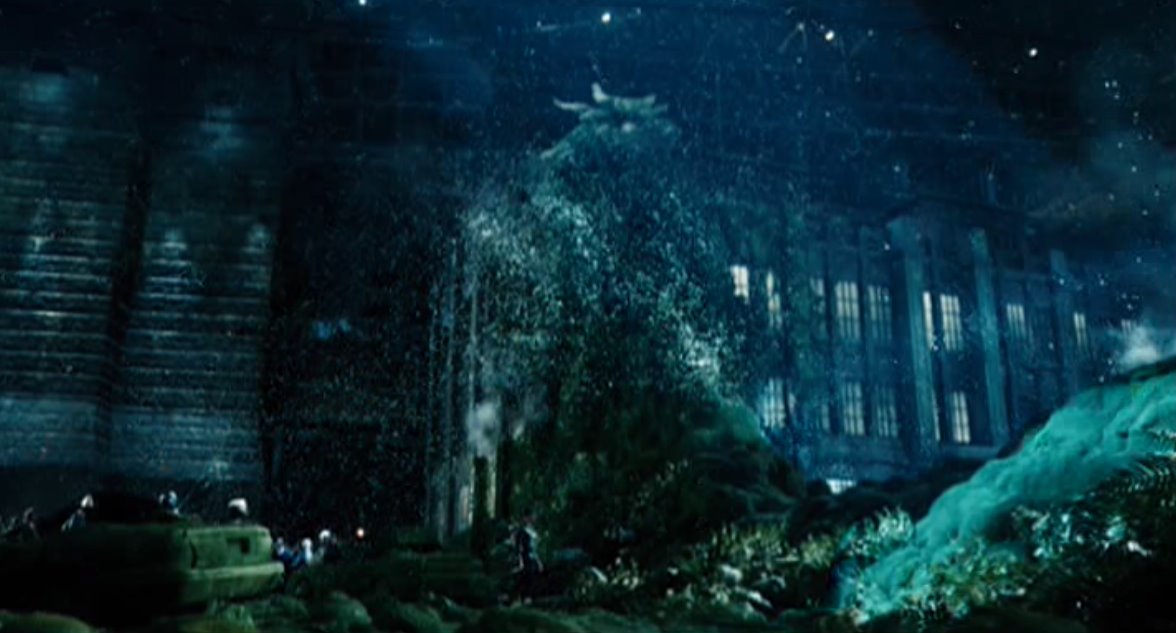 |
| It looks like Christmas. A gorgeous, foresty Christmas. |
Now, that doesn't quite tie into my persuasive and totally legit argument that the Hellboy movies are great Halloween movies all that much, but I couldn't write a post on Hellboy II without mentioning that scene. What does tie into the main point of this article is the design of the creatures in Hellboy II.
It's like every creature was designed to be the most perfect and unique version of that creature. The elves look like elves but not really like any other elves seen elsewhere, with the red eyeliner and odd wrinkle lines on their still smooth faces. In the Troll Market, there is a scroll master who has a castle for a head! A castle for a head and yet it looks like he could exist. That's the thing all these creatures are so well designed they look as though they could be real, not merely imaginative creations.
But the thing that sticks out for me as a direct influence or carry-over from Pan's Labyrinth is creatures with eyes where eyes don't usually go. Remember the Pale Man?
 |
| Everybody remembers the Pale Man. |
Well, see how his eyes aren't where eyes generally go? How they are, in fact, in his hands? Eyes usually go in eye sockets in the face. His don't.
You know who else doesn't have their eyes on their face?
 |
| "Is it me?" |
The Angel of Death from Hellboy II. Look at that, eyes all over the place, except where they should be.
Now, all of the wonderful creatures, monsters and fairy folk alike, in the Hellboy movies would make great costumes. I mean, I forgot to even mention Johann Kraus who is a steampunk wet dream in a gas powered Iron Man suit.
The point of all this is to say, the Hellboy movies are great and really should be considered essential Halloween viewing. They're steeped in horror (Lovecraftian and otherwise), have amazing monsters, beautiful creatures, and although I didn't talk about it since I was trying to sell you on the horror thing, they are really funny.
So, watch them this Halloween. At the very least, they'll give you some awesome costume ideas for next year.
References:
Hellboy Wikipedia page
Hellboy (character) - The Hellboy Wiki
Hellboy (comic book series) - The Hellboy Wiki
Hellboy (film) Wikipedia page
Hellboy II: The Golden Army Wikipedia page
Lovecraftian Horror Wikipedia
Hollywood is Right to Turn Down "Hellboy 3"
